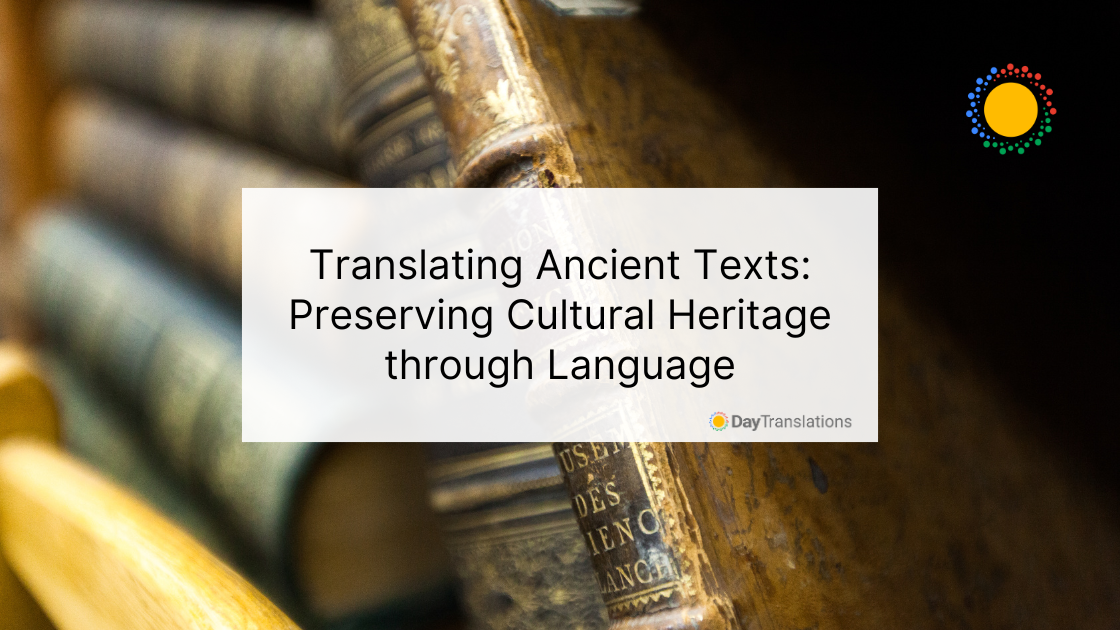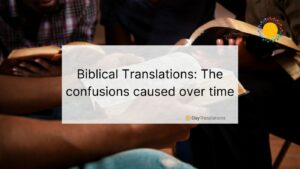Ancient texts and manuscripts serve as invaluable windows into the past, offering insights into the cultures, traditions, and histories of civilizations long gone. Translating these texts is a laborious yet essential endeavor that requires specialized skills and approaches to preserve their cultural and historical significance. In this article, we will explore the multifaceted world of translating ancient texts, shedding light on the challenges faced, the methodologies employed, and the critical role this practice plays in safeguarding our rich cultural heritage.
The Significance of Translating Ancient Texts
The importance of translating ancient texts cannot be overstated. These texts are repositories of knowledge, bearing witness to the intellectual, spiritual, and societal dimensions of ancient civilizations. They provide us with a unique perspective on how our ancestors perceived the world, structured their societies, and expressed their thoughts and ideas. Moreover, they often contain the seeds of modern disciplines such as philosophy, medicine, and science, making them indispensable for researchers, historians, and scholars.
However, the inherent challenge lies in the fact that many of these ancient texts are written in languages that are no longer spoken or are poorly understood today. To unlock their treasures, dedicated experts must employ specialized skills and approaches.
Specialized Skills Required for Translating Ancient Texts
Proficiency in the Source Language
The first and most fundamental skill required for translating ancient texts is a deep understanding of the source language. Ancient languages like Latin, Classical Greek, Sanskrit, or Cuneiform scripts require years of study and practice to master. Translators must be able to decipher the grammar, syntax, and vocabulary, often using reference materials like dictionaries, lexicons, and grammatical guides specific to the ancient language.
Contextual Knowledge
Language alone is not sufficient. Translators must also possess extensive contextual knowledge of the culture, history, and social norms of the period in which the text was written. This background information is crucial for accurately interpreting idiomatic expressions, metaphors, and references that may not have direct equivalents in modern languages.
Paleography and Codicology
Paleography is the study of ancient scripts and handwriting, while codicology focuses on the physical aspects of manuscripts, such as their materials, structure, and layout. Translators must be skilled in both disciplines to properly analyze and interpret ancient texts. Understanding the physicality of a manuscript can offer clues to the context and authorship of the text.
Historical Linguistics
Translating ancient texts often involves dealing with linguistic changes and evolutions. Expertise in historical linguistics is essential for recognizing how languages have transformed over time and identifying archaic or obscure terms that may not appear in standard dictionaries.
Approaches to Translating Ancient Texts
Comparative Analysis
Translators frequently rely on comparative analysis, comparing the ancient text with related texts in the same language or with translations into other languages. This comparative approach helps in clarifying ambiguities and verifying interpretations, making the translation more accurate.
Contextual Reconstruction
Understanding the historical and cultural context of an ancient text is paramount. Translators often work closely with historians and archaeologists to reconstruct the context in which the text was written, shedding light on its intended meaning.
Collaborative Efforts
The translation of ancient texts is rarely a solitary endeavor. Translators often collaborate with experts from various fields, including linguistics, archaeology, anthropology, and history, to ensure the accuracy of their work.
Digital Tools
In recent years, technology has played an increasingly significant role in translating ancient texts. Optical Character Recognition (OCR) software and digital databases of ancient manuscripts have made it easier to access and analyze texts. Machine learning algorithms can assist in deciphering handwriting and identifying textual variants.
Preserving Cultural Heritage
Translating ancient texts is not just an academic pursuit; it is an act of preserving cultural heritage. It allows us to bridge the gap between past and present, ensuring that the wisdom, stories, and knowledge of our ancestors continue to enrich our understanding of the world. By unlocking the secrets held within these texts, we can appreciate the diversity of human thought and the continuity of human experience across time and space.
Wrapping Up
Translating ancient texts is a complex and demanding task that requires a unique set of skills and approaches. However, the rewards are immeasurable. Through the dedicated work of translators and scholars, we can unlock the treasures of the past. This helps us preserve the cultural heritage of our ancestors and deepening our understanding of human history. These translations serve as a testament to the enduring power of language and the enduring relevance of our shared human experience. In this way, we continue to honor the voices of the past, ensuring that their wisdom and knowledge remain accessible to future generations.














Sorry, the comment form is closed at this time.